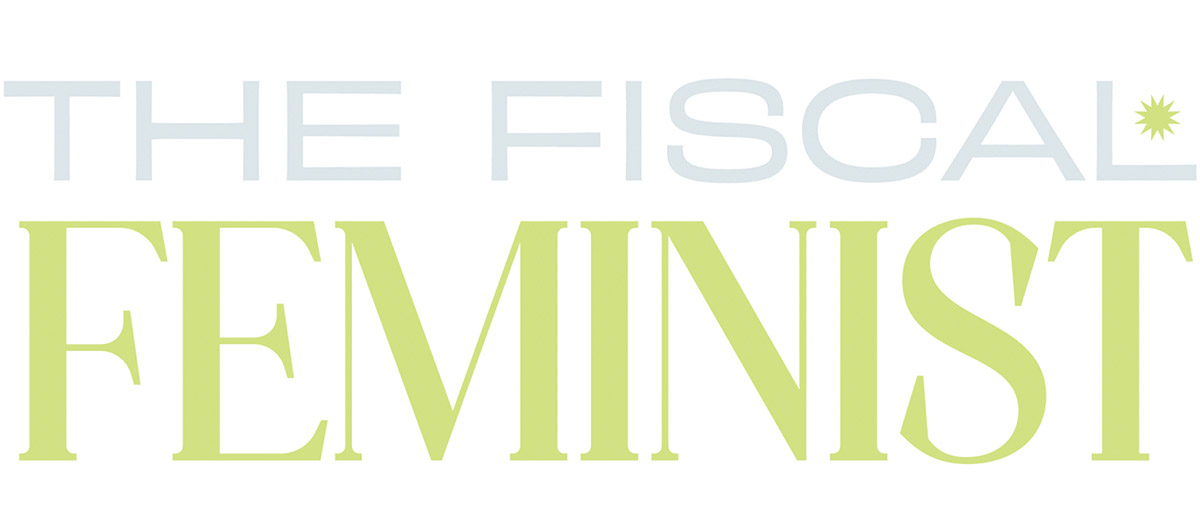Not to prematurely declare the current public health and economic emergencies over, because it’s not, but the reopening of some businesses this summer presents a good time for many of us to reflect on our finances. It’s a practice we self-reliant women should be doing all the time anyway, and now there is a special opportunity to assess and learn. With four grueling months of health scares, social distancing, and financial instability, let’s look at how we did.
Our Personal Fiscal Puzzle
Specifically, there are four key pieces of our fiscal puzzle that should be analyzed in a post-mortem evaluation: retirement, budget, investments, and career. Each plays a critical role in our overall strength and well-being, and each was stressed during the turmoil known as the first half of 2020. Without these four pillars of security, it is virtually impossible to provide for your family, have security, or simply enjoy your financial independence.
Let’s start at the ending… Retirement
If it seems like we’re starting backward by beginning with the funds that will be used last, that’s because reverse-engineering can be the simplest way to getting the answers you need. Your retirement savings, whether it’s an employer-sponsored 401(k), individual retirement account (IRA) or something else, should never be taken for granted due to its long timeline. In fact, it’s one of the best barometers we have for our own financial health.
Think of your retirement as the proverbial canary in the coalmine. If the nest egg cracks, it will likely impact everything else tenfold. Everyone’s risk tolerance varies, but a retirement portfolio should be set up to reduce risk and exposure in your investment strategy, the closer one gets to her retirement date.
A loss of retirement funds as a result of a pandemic or other economic calamity, just before the critical milestone of retirement can be the nightmare scenario for women of a certain age.
It’s also one of the more obvious wealth sources that can be tapped during an unforeseen emergency like COVID-19. Under the CARES Act, Americans can take a withdrawal of up to $100,000 from their 401k or IRA without the typical 10 percent early withdrawal penalty, however, the distribution will be taxed at ordinary income tax rates. The total amount of the distribution is treated as income and taxed accordingly. The CARES Act gives you three years to pay the taxes on the withdrawal (normally, it is a one-time lump sum tax payment) or you can repay back what you withdrew to your 401(k) or IRA, and receive a tax refund.
Although the CARES Act enables us to make a withdrawal to help us during this unprecedented time, before you take the step of dipping into your retirement, it is better to explore all other alternatives first. The permanent loss of principal from withdrawing early and the long-term benefits of compound growth is extremely detrimental to your retirement outlook. The worst time to withdraw investment assets is in the middle of a downturn and extreme volatility; investments will be worthless and hence, investors will have to withdraw a greater percentage of their account and will turn temporary paper losses into permanent realized losses.
Even if you try to replenish later, you will have lost all the compounding of growth from the withdrawn principal and the concern is that if you take advantage of the CARES Act provisions and withdraw, there is a good chance that you will not replenish the withdrawal which will be a permanent reduction.
We all think that retirement is somewhere out in the future, but it does ultimately arrive sooner than we think, and without retirement funding, retirement can look bleak. Women live longer than men and need to understand the longevity of their retirement funding.
How did our budget hold up??
The unexpected fall out from the pandemic involved many women losing their jobs. This is obviously very stressful, and although stimulus checks may have been forthcoming and unemployment compensation may be available, there could have been long delays in receiving these payments.
It is essential that every woman have a budget. Have an honest conversation with yourself about how you spend your money and track it! Even if you are the only one in your household, it is important to review your savings and fine-tune your budget. Determine what is necessary and what expenses can be cut.
There are many free budgeting apps that can help you to create and monitor your budget and your savings. It’s best to track your finances in real-time using a spreadsheet or tech-enabled tool such as Mint so you get the best read on where your money is going. Make sure to scrutinize your fixed costs such as rent, mortgage, utilities, cell phone, food, and all insurances, including health insurance. List all credit card payments. Review all discretionary expenses and line item what you are spending that are non-essential. Eliminate or severely reduce online shopping, clothing, and subscriptions. Re-evaluate your take-out food purchases. The more you understand, the easier it will be to find a way to save.
Every woman needs to prioritize having an emergency fund which equals 3-6 months of living expenses that can carry them through unforeseen circumstances such as job loss or illness. Regardless of your income, an emergency fund is essential! Women of all income levels need to have an emergency fund – it is the life raft when there is turmoil.
The sequence of solid budgeting is to track spending, pay down all credit card debt, and establish an emergency fund.
Once you do that, you can move on to investing.
Was our investment strategy solid and did we react in fear?
This pillar has to do with the more active aspects of wealth creation. Stocks can be a sizeable part of an investment strategy, but diversification of asset classes – whether its mixing bonds, alternative investments (such as liquid hedge funds, hedge funds, private equity, or REITs), real estate, or art – is a key component of long-term financial independence. It aims to maximize returns by investing in different areas that would each react differently to the same event. If one portion of your portfolio is declining, it may ensure that other portions are not declining or not declining as much.
With that in mind, ask yourself, ‘how did my strategy fare since all hell broke loose in March’? Did you have a diverse allocation, and did you make decisions during the volatility from fear or rationality?
A good stock selection strategy is to focus on the fundamentals of companies issuing the stocks. Remember that buying stocks is buying ownership in a company. Does the company have cash flow, too much debt, good management, and are they allocating funds for capital expenditures and shareholder return and dividends?
With the return to a lower interest rate environment, the dividend yield opportunities available within the equity market are at more compelling levels relative to fixed-income securities than the historical norm. Investor income requirements will likely result in greater demand for dividend-paying stocks. More than half of the S&P 500 stocks yield greater than the 10-year Treasury yield, as of the end of last year. During such times, high dividend growers have outperformed high dividend yielders and the S&P 500. Dividend growth stock investing focuses on companies that pay dividends and grow dividends annually.
Regardless of price dips, dividends will be paid, and this especially helps investors who are living off their portfolios in retirement. Companies may change their dividend policies, so be mindful of that. Also, be mindful of overconcentration in one stock – probably prudent not to have one stock make up more than 5% of your portfolio.
With respect to bond investments, consider varying elements such as maturities, credit qualities, and sensitivity to interest rate changes to diversify within that asset class.
Once you have your mix of stocks, bonds, and alternatives, on a regular basis check the weightings of each allocation to make sure that they still make sense given current market conditions; from time to time you should rebalance your allocations.
And finally, don’t try to market time and have a short-term strategy. Market timing is impossible and very risky. If you have a long-term, diversified strategy, don’t let fear motivate you to cash out during dips in the market that will result in permanent capital loss; if you stay the course over the long-term you will benefit from the ultimate run-up and recovery.
It takes discipline and consistent investing to build wealth as well as patience and unemotional decision making. Make regular saving and investing a priority by setting up automated, regular deposits.
Reviewing your strategy shouldn’t be done only in times of crisis. It is helpful during bull markets and periods of personal and professional success as well.
Keep in mind though, that stress testing finances isn’t merely checking up on your investment accounts. Rather, it’s a holistic view of your entire financial picture.
Career Resilience – how has your chosen career weathered the pandemic?
The same look at how your money fared during the crisis should be applied to your job as well.
Were you able to keep your job during the quarantine? Were your salary and/or benefits cut? Is working from home something you’d like to continue?
Perhaps your career trajectory wasn’t as solid as you thought it was prior to the outbreak and some pivoting in the form of additional education and training or an entirely new professional endeavor are in order. Times of stress are not fun nor avoidable, but they can be a useful reflection tool. If it wasn’t for the disruption of the pandemic, it’s possible that you wouldn’t have found the flaws in your career – and then made the necessary self-improvements.
Unfortunately, the White House announced more than 21 million Americans lost their jobs as of June, and quiet might not be a luxury all of us can afford at the moment. A crisis of that ilk requires the character to persevere.
The good news is if you are smart with your finances, you have options. In addition to federal economic stimulus – and likely subsequent waves of stimuli – private companies have demonstrated leniency. From utilities and car payments to mortgage forbearance and credit card interest rates, there could be a deal to be struck somewhere. Additionally, there are always the 0-percent credit card options, either as a balance transfer or a place to temporarily park debt for free until your finances are right-sized.
Whatever it takes, you will do what you have to in order to feed those who depend on you and rise another day. With this prime opportunity for reflection – and the ongoing stress-testing of your finances every three to six months – we’ll all be stronger when we come out on the other side.




